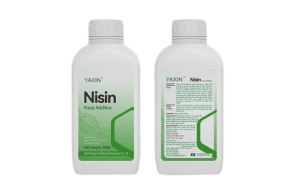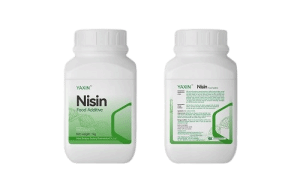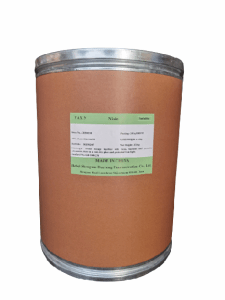
 CONTACT
CONTACT
- Linkman:Linda Yao
- Tel: +8618231198596
- Email:linda.yao@dcpharma.cn
- Linkman:CHARLES.WANG
- Department:Overseas
- Tel: 0086 0311-85537378 0086 0311-85539701
Preservative Effect of ε-Polysine Hydrochloride in Pet Food
TIME:2025-02-10The Preservation Effect and Market Potential of ε-Polylysine Hydrochloride in Pet Food
Ⅰ. Preservation Effect
1. Broad-Spectrum Antimicrobial Activity
ε-Polylysine hydrochloride exhibits inhibitory effects on Gram-positive bacteria, Gram-negative bacteria, yeast, mold, and viruses. In pet food, it effectively inhibits common harmful bacteria such as Escherichia coli and Salmonella, as well as molds that cause food spoilage. This helps prevent pet food deterioration and extends its shelf life.
2. Unique Mechanism of Action
As a poly-cationic polypeptide, ε-polylysine hydrochloride interacts with bacterial cell membranes through electrostatic attraction, increasing membrane permeability. This leads to the leakage of intracellular components, such as nucleic acids and proteins, ultimately causing cell death and achieving a preservative effect. This mechanism makes it difficult for microorganisms to develop resistance, ensuring a sustained and stable antimicrobial function.
3. Excellent Stability
ε-Polylysine hydrochloride is pH-independent and heat-stable (withstanding 120°C for 20 minutes). During pet food processing, whether under high-temperature sterilization or in different pH environments, it retains its antimicrobial activity and effectively preserves the food.
4. Synergistic Effects
When used in combination with acetic acid, citric acid, malic acid, glycine, and other natural preservatives, ε-polylysine hydrochloride exhibits synergistic enhancement. In pet food, it can be used alongside other natural antimicrobial agents or preservatives to enhance overall preservation, reduce the required dosage of a single preservative, and lower costs.
Ⅱ. Market Potential
1. Growth of the Pet Food Market
As living standards rise and the demand for pet companionship increases, the pet food market is experiencing rapid growth. Consumers are placing greater emphasis on the quality and safety of pet food. ε-Polylysine hydrochloride, as a safe, efficient, and natural preservative, aligns with the market demand for high-quality, natural, and healthy pet food, making it increasingly likely to be widely adopted, with expanding market demand.
2. Rising Consumer Awareness
Pet owners are becoming more conscious of pet health and are better informed about pet food ingredients. ε-Polylysine hydrochloride, as a natural and nutritious antimicrobial agent, decomposes into lysine in the body, ensuring high safety and making it easily accepted by consumers. As consumers learn about its preservation benefits and safety, they may prefer pet foods containing this ingredient, driving its market growth.
3. Wide Range of Applications
Pet food comes in various forms, including dry food, wet food, canned food, and treats. ε-Polylysine hydrochloride can be applied to all types of pet food, from high-moisture products like wet food and canned food to drier products like kibble and treats, ensuring comprehensive preservation effects. This provides it with extensive application potential in the pet food market.
4. Regulatory Support
In China, the Ministry of Agriculture and Rural Affairs issued an official announcement in 2018, adding ε-polylysine hydrochloride to the Feed Additive Catalog (2013), with approved use for dogs and cats. This policy legitimizes its application in pet food, facilitating its promotion and adoption within the industry.
5. Favorable Industry Trends
The pet food industry is shifting towards natural, green, and eco-friendly products, while chemical preservatives are facing increasing regulatory restrictions. As the market share of natural preservatives grows, ε-polylysine hydrochloride, as a representative natural preservative, aligns with industry trends and is expected to capture a larger share of the pet food market.
- Tel:+8618231198596
- Whatsapp:18231198596
- Chat With Skype







